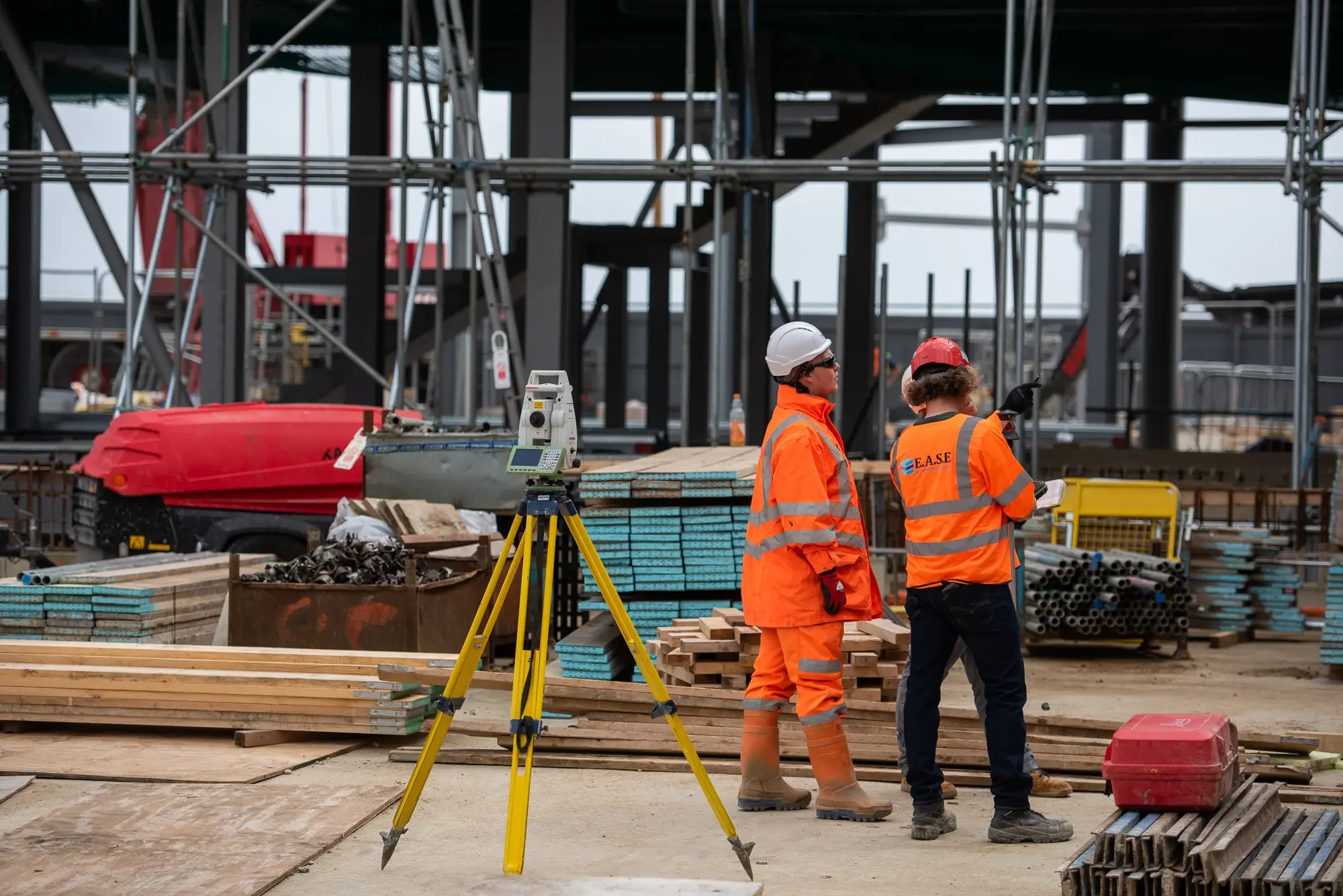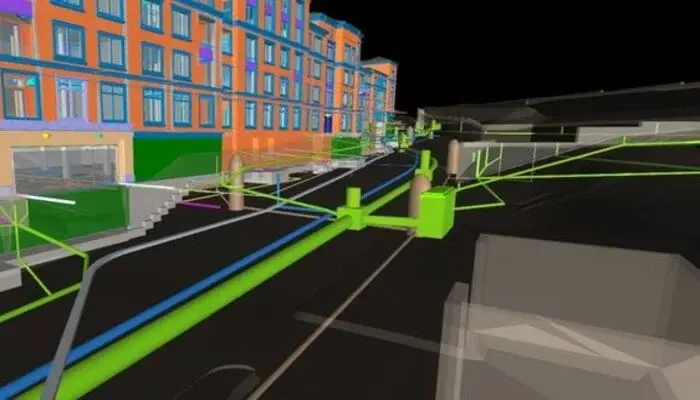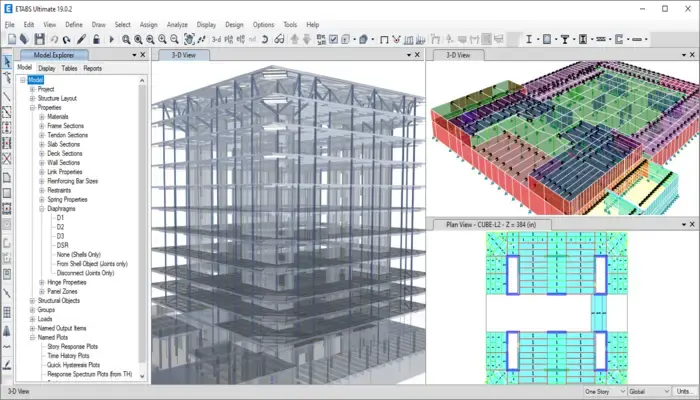
As a civil engineer new to BIM, the thought of BIM engineer salary must have crossed your mind, right? Do you also think about how the roles and jobs of BIM engineers differ from traditional civil engineer jobs? Then, this blog is for you as here we will explore civil engineering jobs and specialised BIM engineer salaries. The blog covers career progression, responsibilities, jobs, and potential salaries for both civil engineers and BIM engineers.
We've also included a direct comparison between civil engineer salary and bim engineer salary in tabular form, highlighting median annual salaries for various designations. However, it's important to note that these figures are approximate and may vary based on location, industry, and skillset. Lastly, the blog outlines the scope of work for both civil engineers and BIM engineers, shedding light on the broad array of responsibilities and opportunities in each field.
What Does a Civil Engineer Do?
A civil engineer designs, constructs, and maintains infrastructure projects such as buildings, roads, bridges, and water supply systems. They ensure these structures are safe, functional, and environmentally sustainable, combining scientific principles with practical skills to manage essential public works. Civil engineers play a critical role in shaping urban landscapes, supporting communities, and contributing to economic growth.

Roles and Responsibilities for Civil Engineering Jobs
- Create detailed infrastructure plans considering structural integrity, materials, aesthetics, and functionality.
- Analyse structural strength and stability using engineering principles.
- Study soil and rock properties for stable foundations and assess risks.
- Optimise transportation systems for efficient flow, safety, and layout.
- Manage water systems, and address flood control, drainage, and environmental impact.
- Oversee construction projects, ensuring compliance, managing schedules, budgets, and team coordination.
- Minimize environmental impact through eco-friendly practices and resource conservation.
- Adhere to building codes, zoning regulations, safety standards, and obtain permits for construction.
- Identify risks, develop mitigation strategies, and ensure safety in construction projects.
- Monitor infrastructure conditions, recommend maintenance, and extend lifespan through renovation.
- Explore new materials, technologies, and construction methods for efficiency.
- Collaborate with interdisciplinary teams and communicate technical concepts effectively.
What does a BIM Engineer Do?

A Building Information Modelling (BIM) Engineer is a specialised professional who uses digital technology to create, manage, and optimise information throughout the lifecycle of a construction project. They play a crucial role in improving collaboration, efficiency, and accuracy in the design, operation, and construction processes of buildings and infrastructure. BIM Engineers are critical to the construction industry's digital transformation. They improve collaboration, reduce errors, and improve the overall project delivery process by leveraging the power of BIM, ultimately resulting in more efficient and successful construction projects.
Read More: Using BIM in Civil Engineering | Everything You Need to Know (2025)
Roles and Responsibilities for BIM Engineer Jobs
- Integrate BIM technology, and processes, and collaborate with architects, engineers, and contractors.
- Create 3D models for the project's physical aspects and update the BIM model to reflect design changes.
- Improve stakeholder communication and decision-making through the BIM platform.
BIM helps identify conflicts and coordinate solutions for construction issues. - Accurate material quantities from the BIM model aid in cost estimation, budgeting, and procurement.
- The BIM model optimizes construction sequences, logistics, and processes for efficiency and safety.
- Create realistic visualizations for project presentations, communicating design intent to clients.
- Integrate diverse data sources in the BIM model for improved accuracy.
Train team members in BIM tools and methodologies. - Stay current with BIM technologies and trends.
Maintain data accuracy and consistency in the BIM model through regular audits.
5 Best BIM Software for Civil Engineers
1. Revit
Revit is a BIM software widely used by civil engineers for its robust modelling capabilities. It allows users to create detailed 3D models of buildings and infrastructure, including structural elements and systems. Its parametric modelling features and extensive library of building components make it an ideal choice for civil engineering projects.
2. STAAD Pro
STAAD Pro is a structural analysis and design software trusted by civil engineers worldwide. It offers advanced capabilities for analyzing and designing a wide range of structures, including buildings, bridges, towers, and industrial plants. The integration with BIM workflows allows engineers to perform structural analysis directly within the BIM environment, ensuring design accuracy and efficiency.
3. Tekla Structures
Civil engineers can use Tekla's abilities for precise modelling of steel and concrete structures, facilitating detailed design and accurate quantity takeoffs. The software's collaborative features streamline communication among project stakeholders, ensuring constructability and efficiency. Additionally, Tekla's interoperability with other BIM tools enhances workflow integration.
4. ETABS
ETABS (Extended 3D Analysis of Building Systems) is a BIM software for structural analysis and design. It enables civil engineers to model and analyze complex building structures, including high-rise buildings and seismic design considerations. The software offers powerful tools for linear and nonlinear analysis, allowing engineers to optimize designs and ensure structural integrity throughout the project lifecycle.
5. ArchiCAD
Archicad is a versatile BIM solution favoured by civil engineers for its intuitive interface and robust modelling capabilities. The software supports the creation of detailed 3D models and intelligent building information. It facilitates coordination between architectural and engineering disciplines, improving design accuracy and project outcomes.
Career Progression Of a Civil Engineer
Broadly speaking, the civil engineer salary is based on multiple factors including education, experience, skills, industry, location, and employer. In addition, obtaining advanced degrees like a master's or PhD in engineering and professional licenses, such as a Professional Engineer (PE) license, can also impact career progression and earning potential for a civil engineer. For your better understanding, here is a general outline of the typical career progression of civil engineer jobs, including the required experience and civil engineer salary.
Entry-Level/Junior Civil Engineer
- Experience: 0-2 years.
- Responsibilities: Assisting senior engineers with basic design tasks, site visits, and the use of engineering software.
- Salary: Entry-level civil engineers can earn a median salary of around INR 2.5 lakhs to 4 lakhs per year.
Mid-Level Civil Engineer
- Experience: 3-6 years.
- Responsibilities: More complex design tasks, project coordination, client interaction, and junior engineer supervision.
- Salary: Mid-level civil engineers can earn a median salary of around INR 4.5 lakhs to 8 lakhs per year.
- Experience: 7-10 years.
- Responsibilities: Project management, project leadership, critical design decisions, mentoring junior engineers, and client management.
- Salary: Senior civil engineers can earn a median salary of around INR 8 lakhs to 12 lakhs per year.
- Experience: 12+ years.
- Responsibilities: Major project management, strategic goal setting, business development, and technical leadership.
- Salary: Principal civil engineers can earn a median salary of around INR 12 lakhs to 15 lakhs per year.
- Experience: 15+ years.
- Responsibilities: Supervising teams, budget management, strategic planning, and departmental leadership.
- Salary: Engineering managers/directors can earn a median salary of around INR 15 lakhs to 18 lakhs per year.
- Experience: 20+ years.
- Responsibilities: Executive leadership, C-suite positions, and strategic decision-making.
- Salary: At this level, salaries can vary widely but often exceed INR 18 lakhs per year.
Career Progression Of a BIM Engineer

The BIM engineer salary is also based on education, experience, skills, industry, location, and employer. With cutting-edge technologies and skills, BIM Engineers create and manage digital models of construction projects to improve coordination, collaboration, and project efficiency. They also specialise in particular software platforms or sectors and stay up-to-date with industry advancements to excel in their career. Here's a general outline of the career progression of BIM engineer jobs, including the required experience and BIM engineer salary.
- Experience: 0-2 years.
- Responsibilities: Assisting senior BIM engineers, creating basic 3D models, collaborating with project teams, and learning BIM software.
- Salary: Entry-level BIM engineer salary ranges between INR 3 lakhs to 5 lakhs per year.
- Experience: 2-5 years.
- Responsibilities: Developing detailed BIM models, coordinating disciplines, managing clash detection, and providing technical support.
- Salary: Mid-level BIM engineers can earn a median salary of around INR 6 lakhs to 10 lakhs per year.
- Experience: 5-8 years.
- Responsibilities: Leading BIM coordination efforts, resolving complex clashes, mentoring junior BIM engineers, and collaborating with project stakeholders.
- Salary: Senior BIM engineers or BIM coordinators can earn a median salary of around INR 10 lakhs to 15 lakhs per year.
- Experience: 8-12+ years.
- Responsibilities: Managing BIM projects, overseeing BIM teams, developing BIM standards, and implementing best practices.
- Salary: BIM managers can earn a median salary of around INR 15 lakhs to 25 lakhs per year.
- Experience: 12+ years.
- Responsibilities: Strategic BIM leadership, managing multiple projects, collaborating with executive teams, and driving BIM innovation.
- Salary: At this level, salaries can vary widely but often exceed INR 30 lakhs per year.
Read More: 6 Emerging Technologies Transforming the Construction Industry Today
Salary Comparison Between Civil Engineering Jobs and BIM Engineer Jobs
The traditional Civil Engineer salary is comparatively lower as compared to BIM engineers due to potentially increasing demand for skilled BIM engineers. Below is a detailed comparison of civil engineer salary and BIM engineer salary presented in tabular form. Please note that these figures are approximate and may vary based on considerable factors like location, industry, company size, and skills, to name a few.
| Designation | Experience Range | Annual Civil Engineer Salary(INR) | Annual BIM Engineer Salary(INR) |
| Entry-Level/Junior Engineer | 0-2 Years | 2.5 lakhs - 4 lakhs | 3 lakhs - 5 lakhs |
| Mid-Level Engineer | 3-6 Years | 4.5 lakhs - 8 lakhs | 6 lakhs - 10 lakhs |
| Senior Engineer | 7-10 Years | 8 lakhs - 12 lakhs | 10 lakhs - 15 lakhs |
| Principal/Lead Engineer | 12+ Years | 12 lakhs - 15 lakhs | 15 lakhs - 25 lakhs |
| Engineering Manager/Director | 15+Years | 15 lakhs - 18 lakhs | 20 lakhs - 35 lakhs |
| Executive/Top Management | 20+ Years | 18 lakhs and above | 30 lakhs and above |
Scope of Civil Engineer
The field of civil engineering has a broad scope, encompassing a wide range of responsibilities and opportunities across multiple sectors. Infrastructure development, which includes planning, designing, construction, and maintenance of structures such as roads, bridges, airports, ports, and railways, is one notable area where civil engineers play an important role.
Furthermore, Civil Engineers are instrumental in construction processes, water resources management, environmental engineering, geotechnical engineering, transportation engineering, structural engineering, construction management, urban planning, and project management. They ensure structures adhere to codes, exhibit structural integrity, and are energy-efficient. They also contribute to environmental engineering, focusing on pollution, air quality, and waste disposal. Civil Engineers also participate in research and development, innovating construction materials, sustainable technologies, and design methodologies.
Civil Engineers provide technical insights, feasibility assessments, and design recommendations to various projects, companies, and government entities. It is a constantly evolving field, due to technological advancements, sustainability concerns, and shifting infrastructure needs. Specializations include green building design, renewable energy integration, and smart city development. Civil Engineers shape society's physical infrastructure, fostering progress and enhancing the quality of life. The field offers diverse career paths with the potential for significant growth and influence.
Scope of BIM Engineer

BIM Engineers play an important and dynamic role in the architecture, engineering, and construction (AEC) industry. They specialise in creating and managing intricate digital representations of buildings and infrastructure projects using advanced software and technology.
BIM Engineers create and maintain 3D models for architectural, structural, mechanical, electrical, and plumbing components, ensuring seamless collaboration among stakeholders. They use advanced analysis tools to identify design flaws and inefficiencies, resulting in optimised and cost-effective designs. BIM models aid in construction planning by visualizing processes and coordinating resources effectively.
They generate precise material quantities and cost estimates, contributing to budgeting and procurement processes. BIM models enhance communication among diverse project teams and clients and extend into facility management by embedding data related to maintenance, operations, and lifecycle management. BIM Engineers stay updated with technology trends and specialise in areas like structural coordination, clash detection, and sustainability analysis.
BIM Engineers revolutionise the construction process by implementing technologies like virtual reality (VR), augmented reality (AR), and artificial intelligence (AI). They ensure regulatory compliance and provide training for new users, facilitating smooth adoption. Their expertise is in high demand as the industry recognises the value of digitized and collaborative construction processes.
Read More: Your Definitive Guide to Understanding BIM Objects
Conclusion
Civil engineers and BIM engineers both play important roles in shaping the urban landscape and driving economic growth. While civil engineers have a broad impact across sectors such as infrastructure development, environmental engineering, and construction management, BIM engineers specialize in creating and managing digital models that enhance collaboration, efficiency, and communication throughout the construction process. This blog provides a comprehensive understanding of the roles, responsibilities, career progression, and impact of civil engineers and BIM engineers on the construction and infrastructure sectors, emphasizing the diverse opportunities and responsibilities available within each field.
For those interested in learning more about BIM and the newest technologies in the construction sector, Novatr offers a BIM Professional Course for civil engineers. By taking the course, they can gain knowledge from experts in the field, learn how to use 8+ BIM software, and master industry workflows. For further practice, they get to work on a capstone project. Do check the course, if it interests you!
Was this content helpful to you



-1.png)







